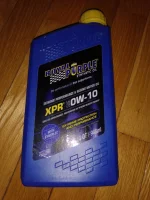Factory fill 0w16 Toyota oil ran from February to August for 10,188 miles. Oil was changed at the dealership since it was a free service and assuming the new oil is Toyota 0w16. 90% is city driving.
So far the car has been great. Been getting anywhere from 52-55mpg and this is the first year Toyota has used the lithium ion battery in the ES.

So far the car has been great. Been getting anywhere from 52-55mpg and this is the first year Toyota has used the lithium ion battery in the ES.

